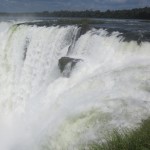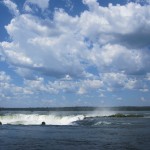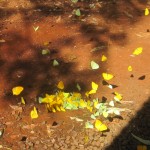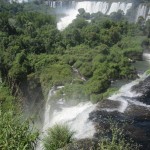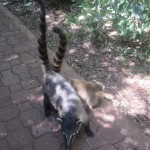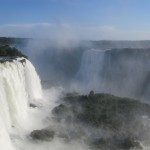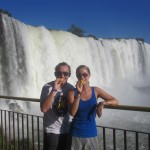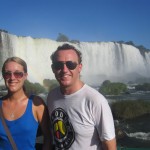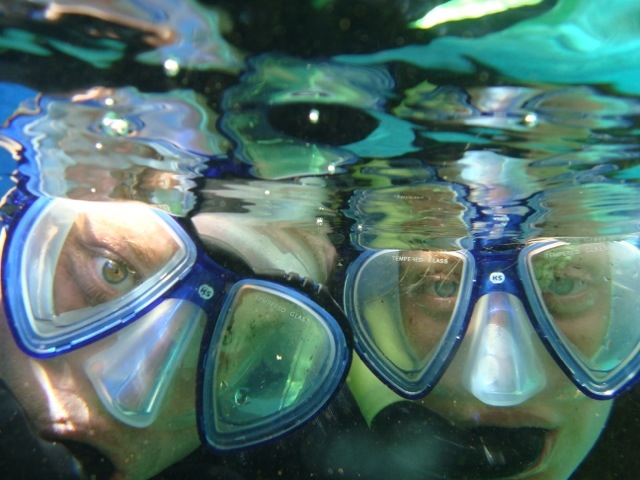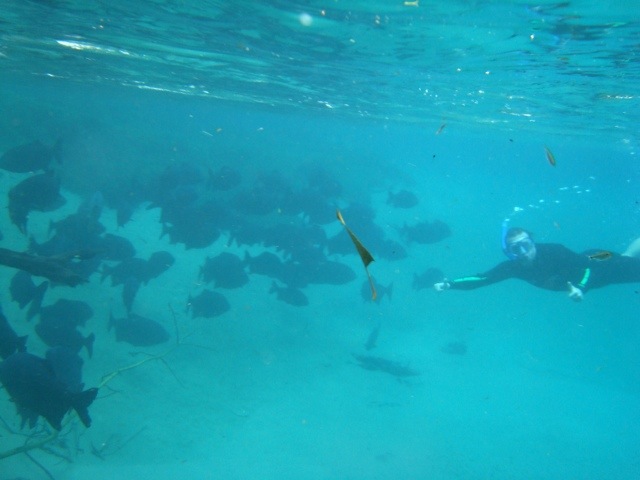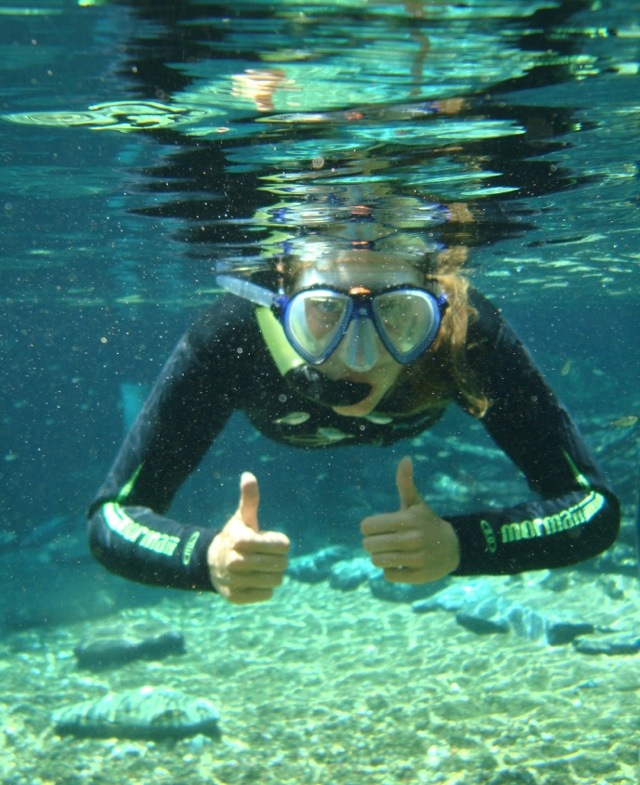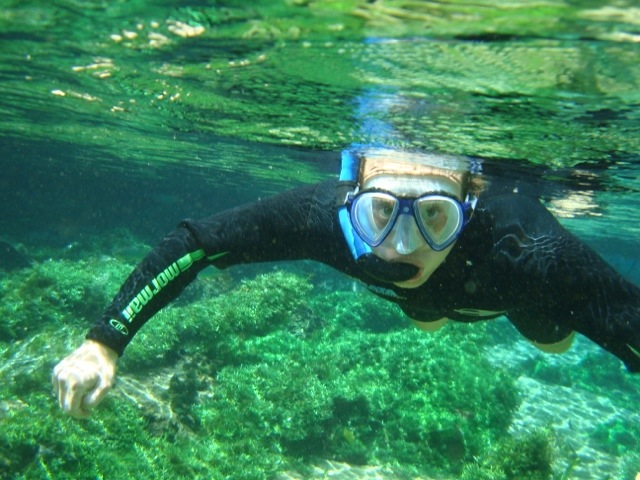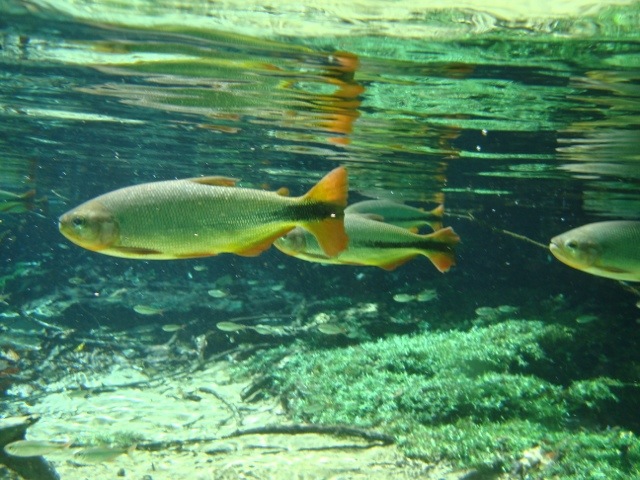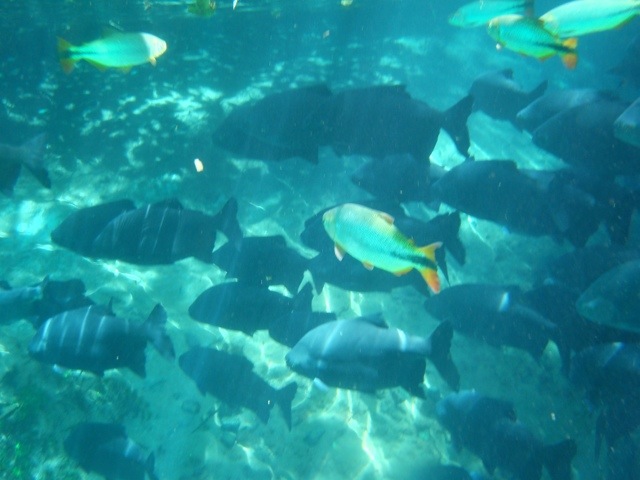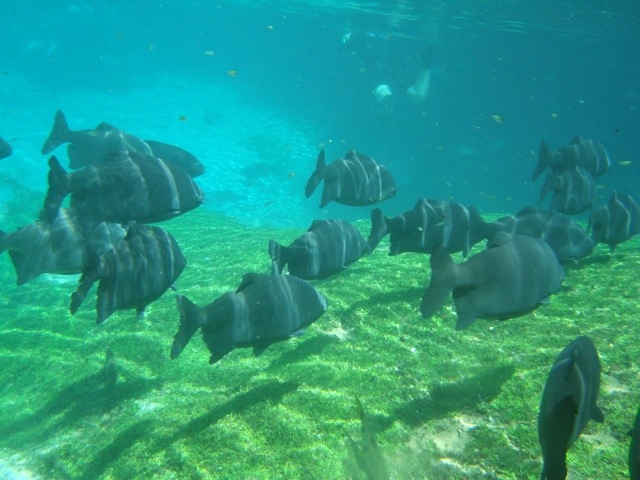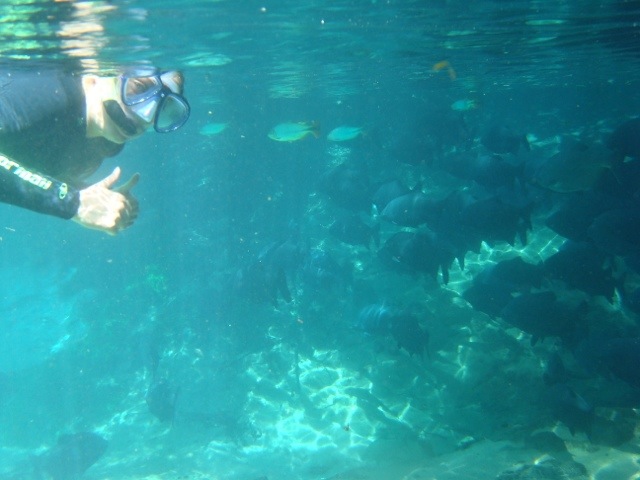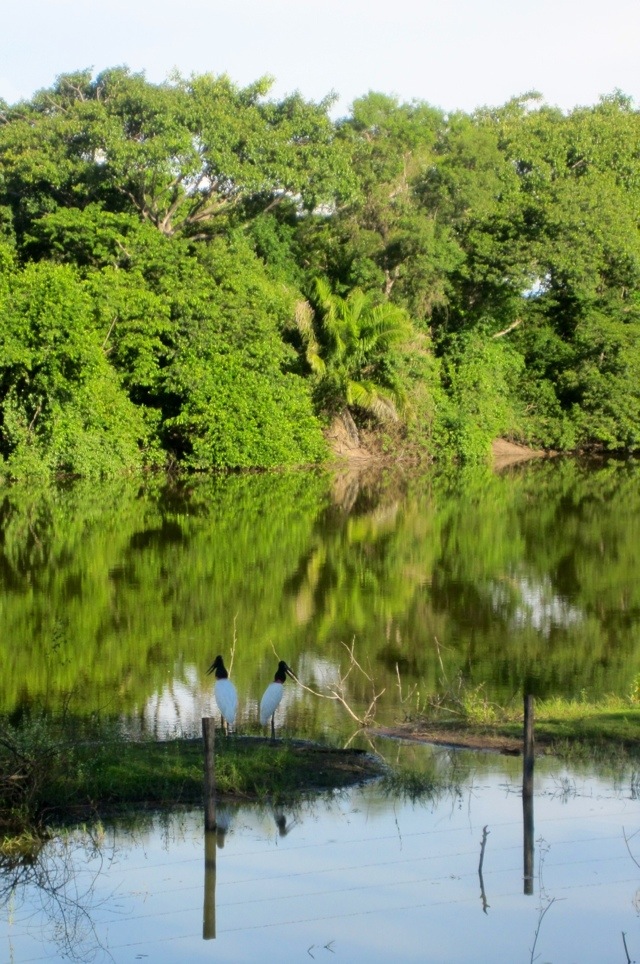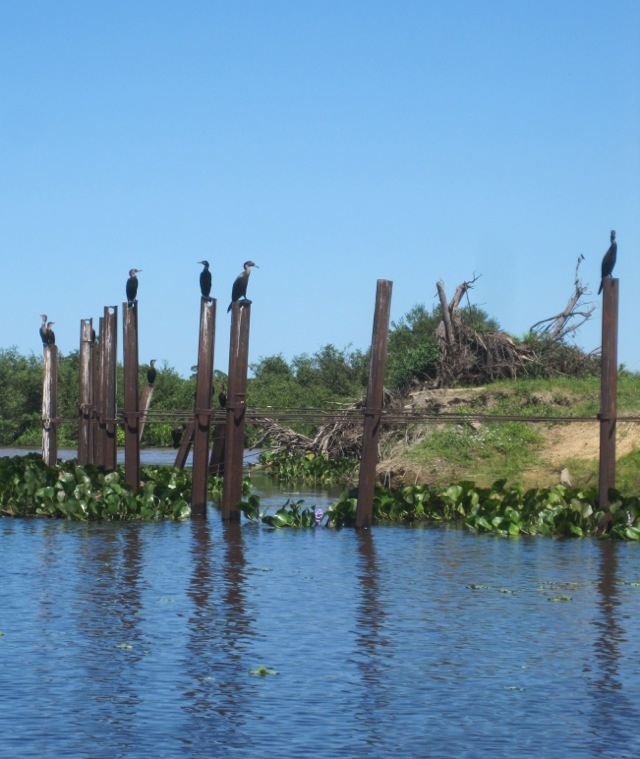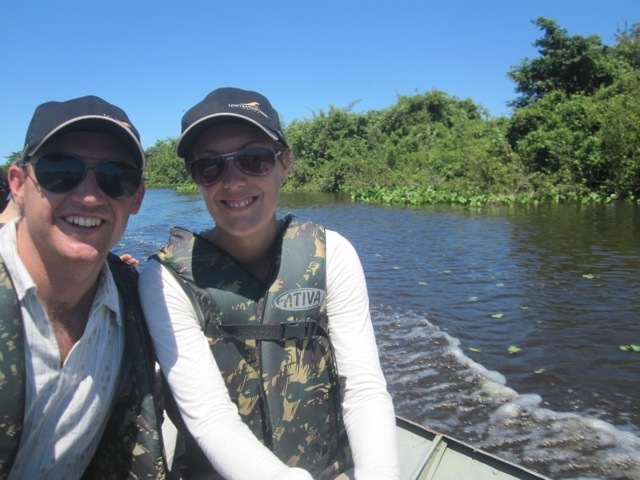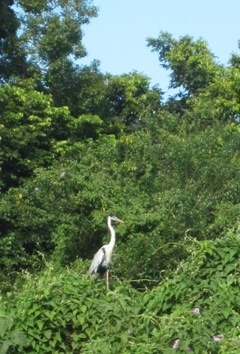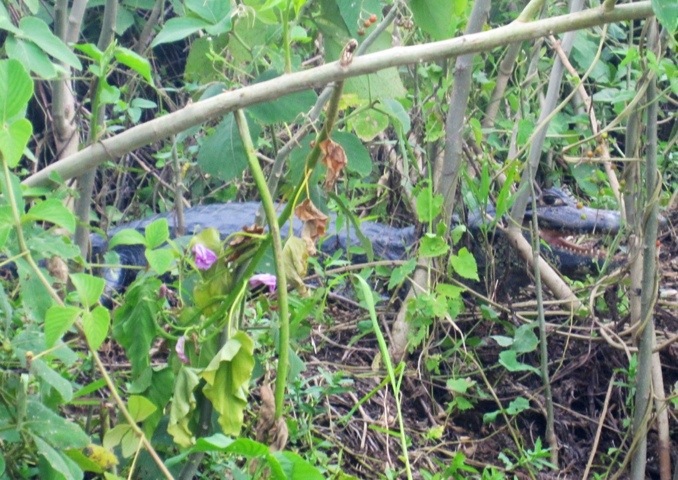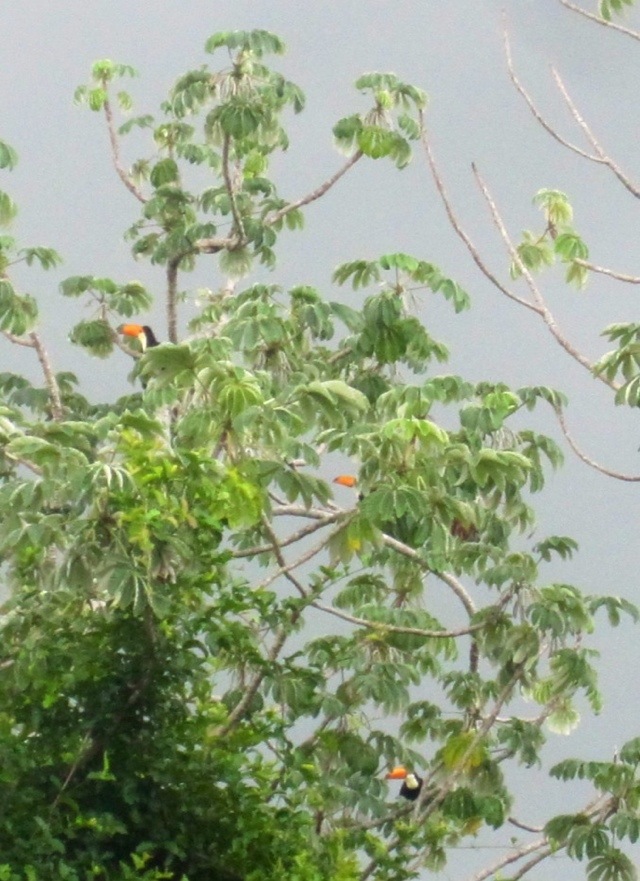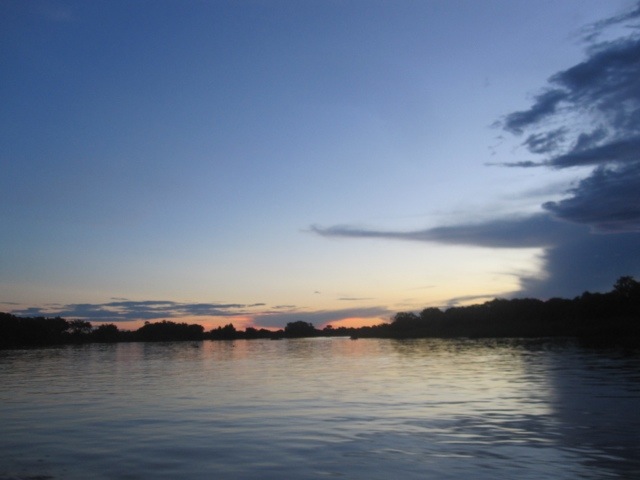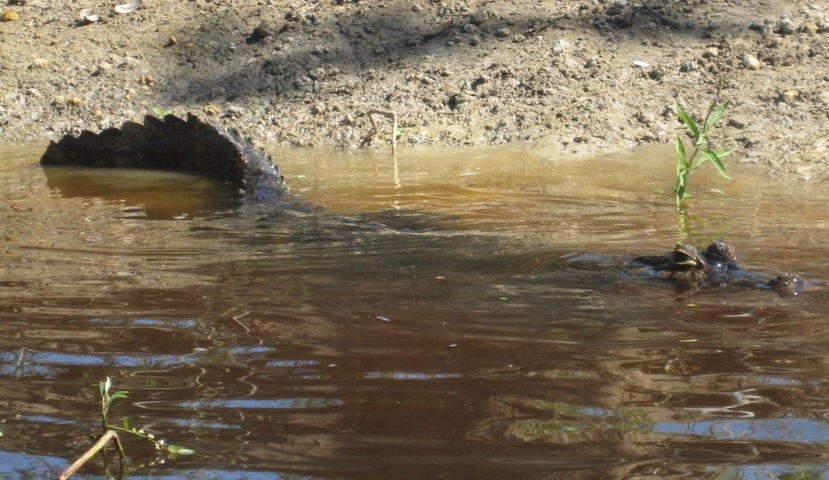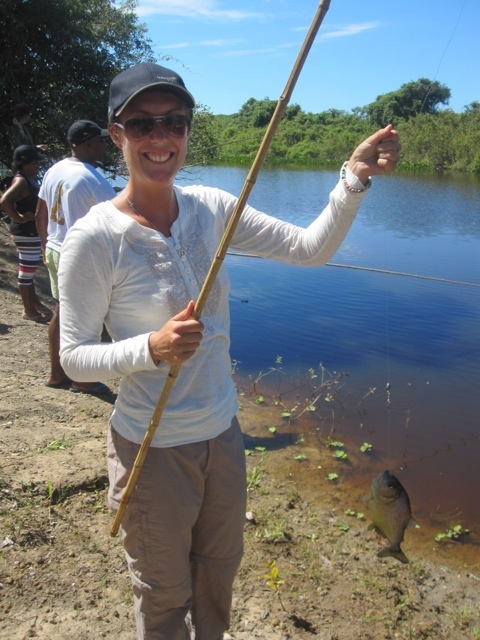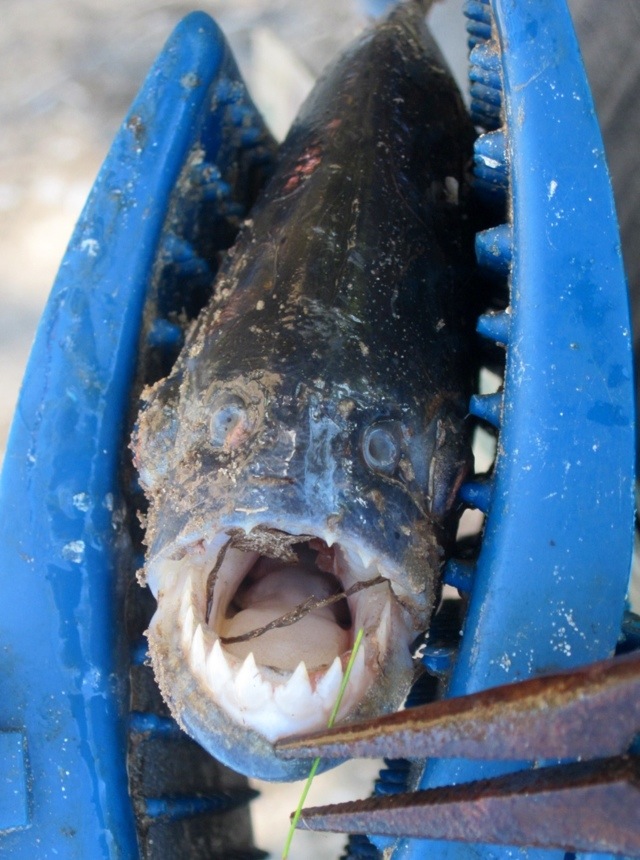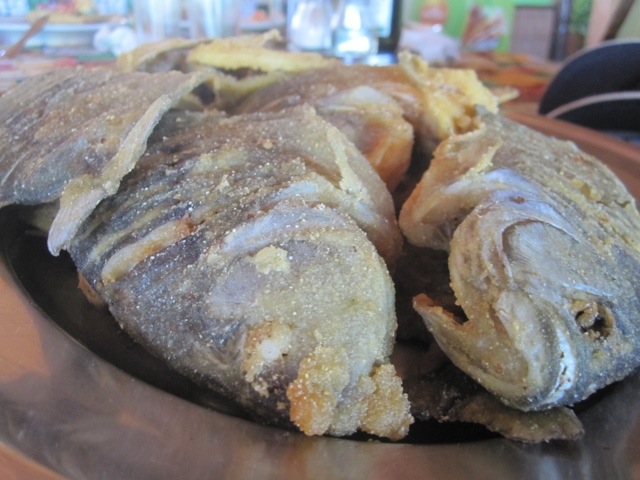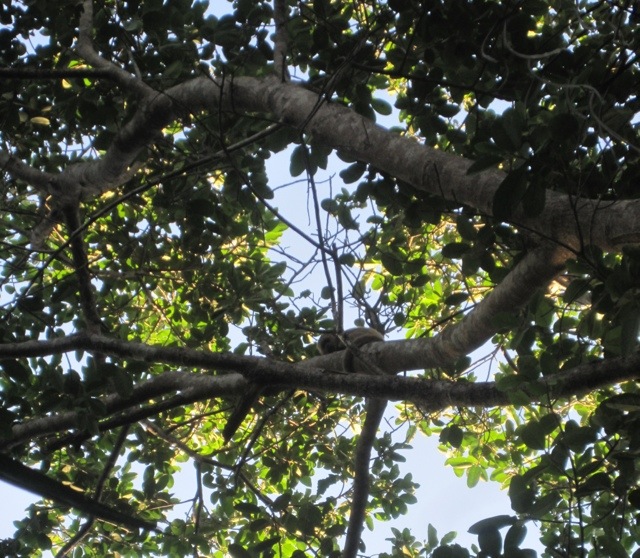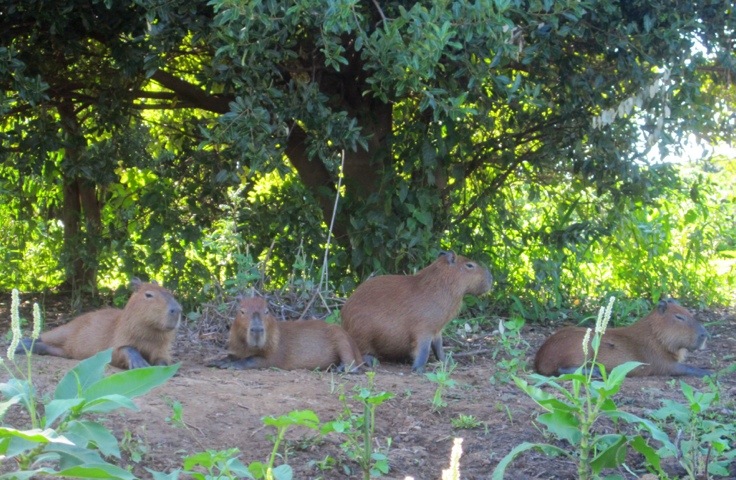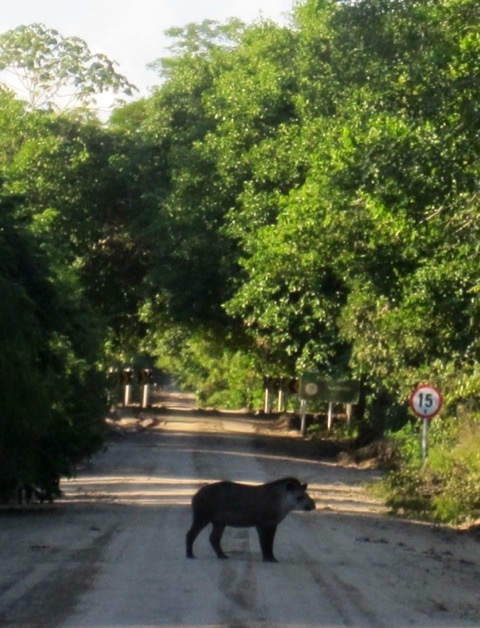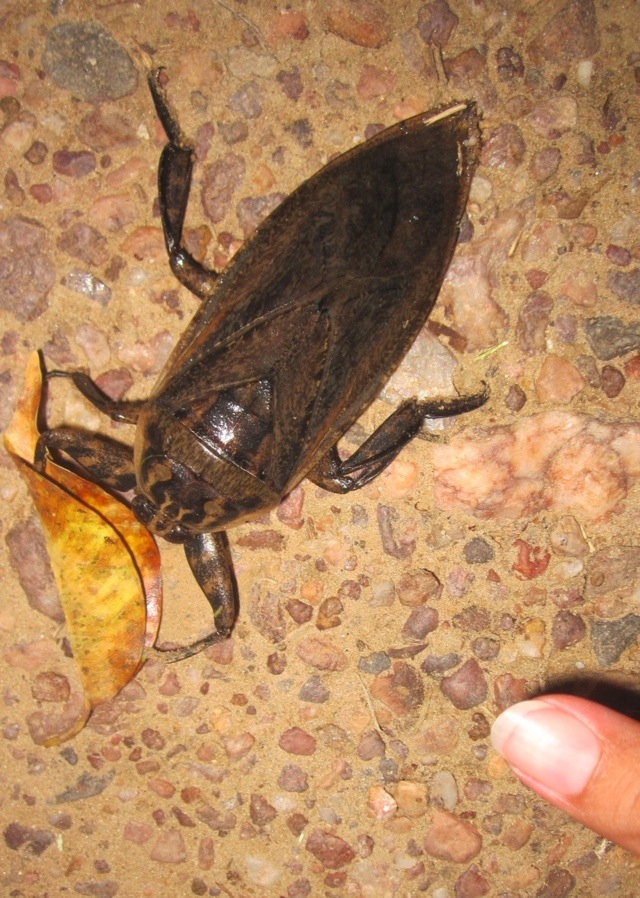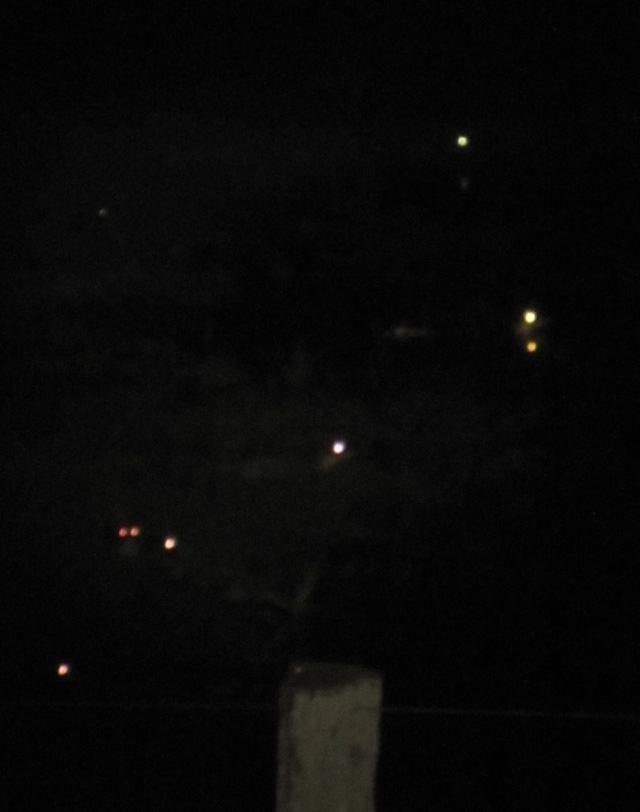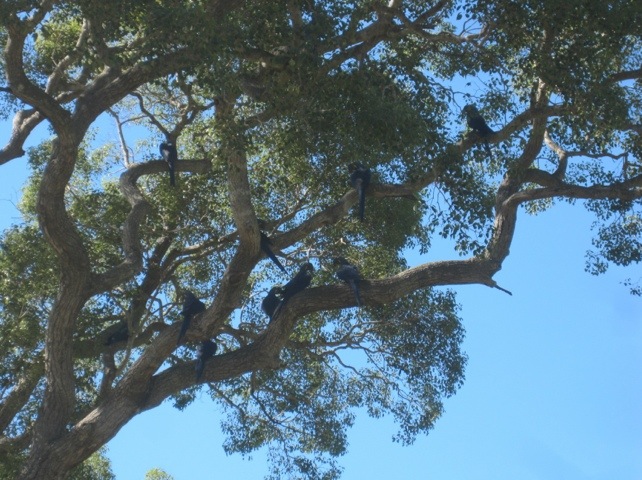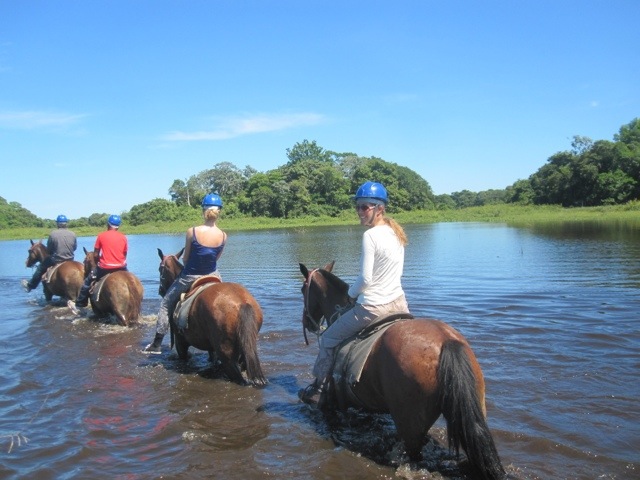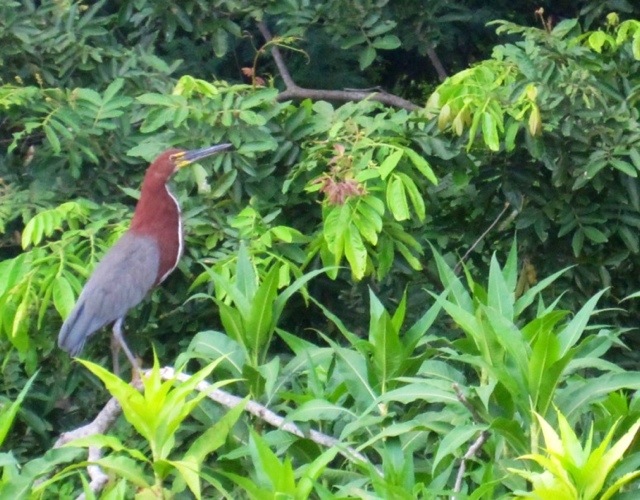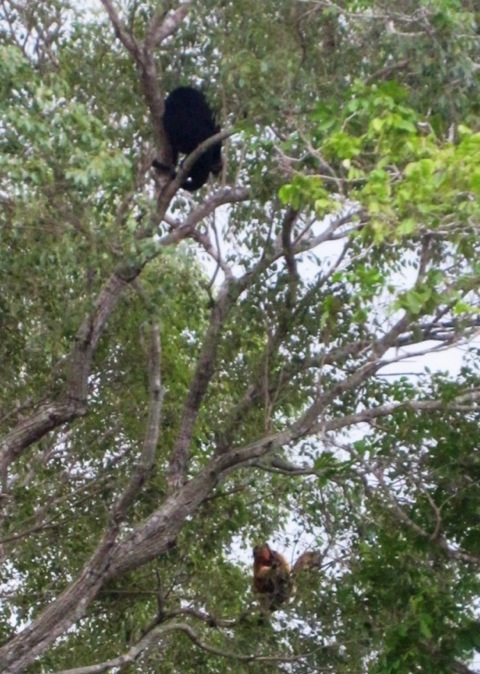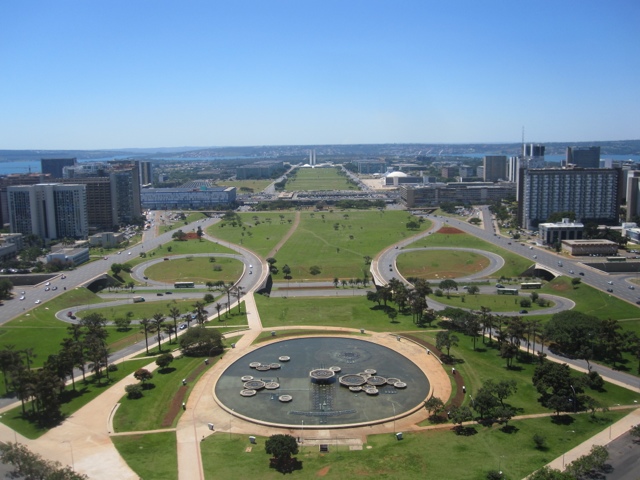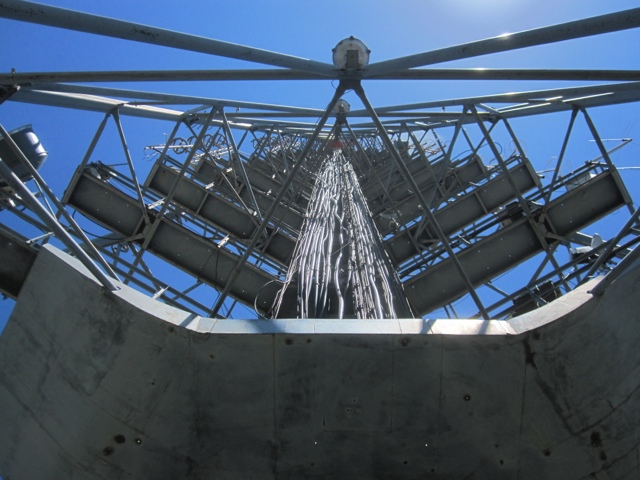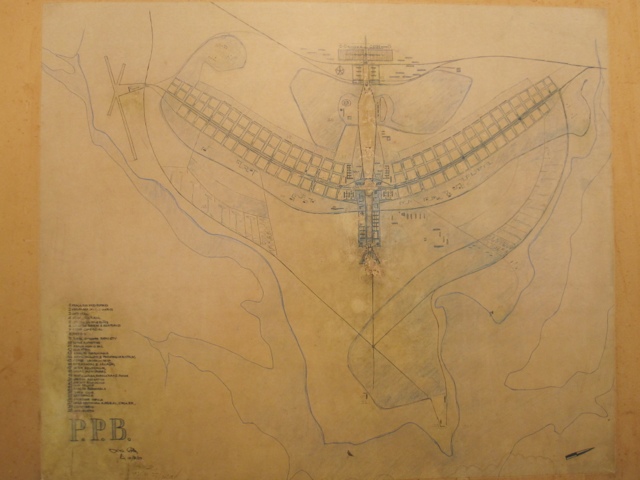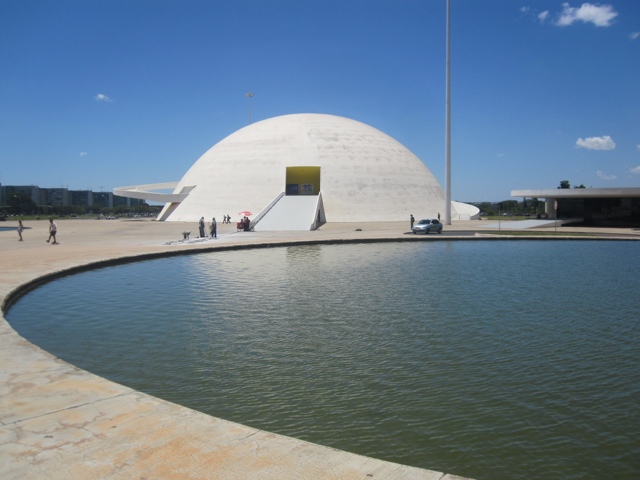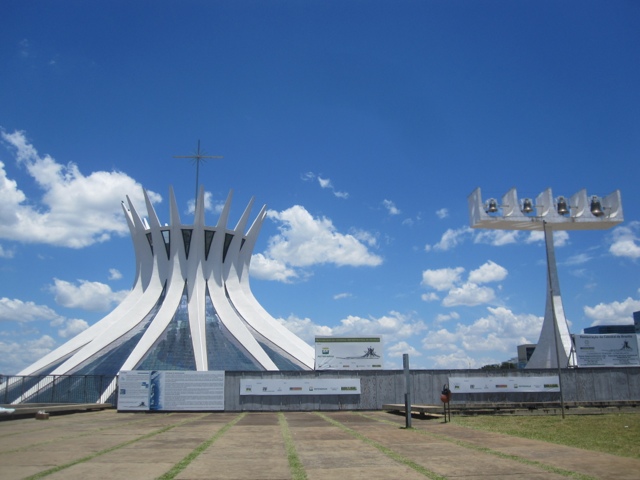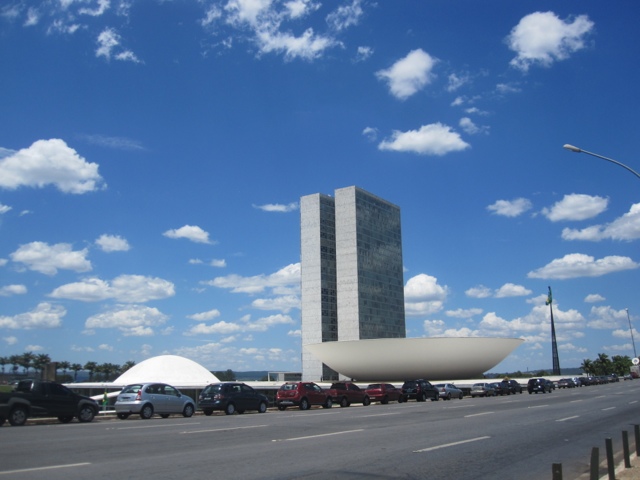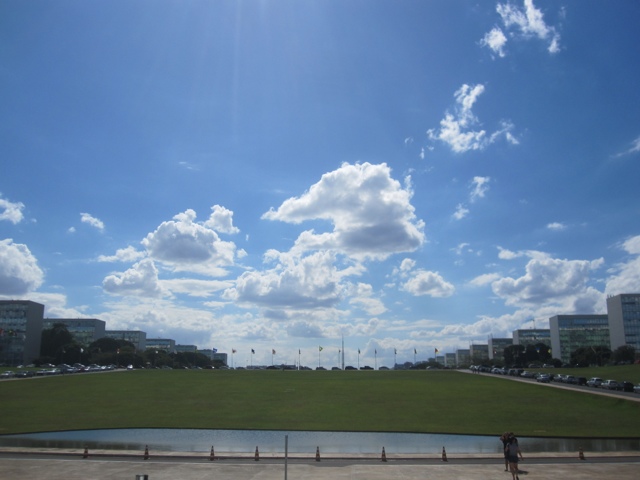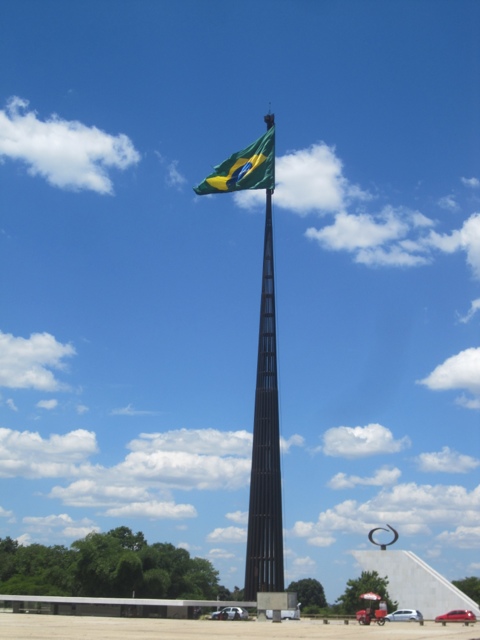Foz de Iguacu isn’t the biggest waterfall in the world, or even in South America – but it’s probably the best. Mesmerising and awe inspiring, I’ve never seen anything quite like it.
However, you have to get there first! We’d not quite prepared ourselves properly, and had left it until the very last minute to race to our 16 hour bus from Bonito in the searing midday heat after a huge all-you-can eat lunch. The trip then necessitated a change of bus and 4 hour wait until the early hours of the morning – at which point we thought we should mark our last night in Brazil with a drink – Caipirinha of course! Surprisingly for Brazil, this was actually quite hard to do, and so we enlisted a fellow traveller to join us and went in search of a bar.Unfortunately bus stations are often on the outskirts of town, and this was no exception. After half an hour of wandering past car dealerships and shopping malls, we went for plan B – do it yourself.
A supermarket sold us a bottle of premixed Caipirinha, but it was warm – so we then had a further hunt for ice, including a solo trip for me through a shop with the assistant desperately trying to understand my broken portuguese and offering everything from fizzy water to frozen fish (they were on ice), finally to Smirnoff Ice. I left disappointed, but we eventually found success in the garage down the road, and even managed to get the security guard at the bus station to take a photo of us with our drinks. As the time for our departure rolled round, we were somewhat unimpressed (although merry anyway) at the lack of a bus; it finally turned up 4 hours later as it was beginning to get light – but things went from bad to worse as we were further delayed and the service was eventually cancelled and we were transferred to yet another bus. We finally rolled into Iguacu at 3pm, 8 hours late and after a 24 hour adventure across three different time zones!
In the few hours of daylight remaining, we headed to the falls. Iguaçu is actually hundreds of waterfalls all together in a 5km stretch of plumetting spray, across different levels of height and with an international border between Brazil and Argentina right down the middle. Each side has a national park at the water’s edge, with walks alongside that means you can experience the full crescendo of awe as you first see the mists of water rising in the distance, hear the deep bass rumble of the torrent, and finally end up right in the middle of the whole thing, soaked to the skin and beaming with pure natural energy. The real highlight is the Garganta do Diablo, the “devil´s throat”, a canyon where the water falls on three sides, creating an incredible sight. We were mesmerised.
We then had the fun of crossing the border, unfortunately not an exciting tale of sailing over the falls in a barrel or across the ravine with jetpacks, but instead taking what we feared was the last local bus as night fell. This was all fine until the bus got to the border (15km from the town) and drove off while we did the paperwork. Fortunately after 45 minutes of slightly nervous waiting with some fellow travellers while debating whether we should try and walk it or hitch a lift, our onward transport turned up, and we were into Argentina at last.
The next day we took to the Argentinian side, which is bigger and impressive, but a bit less immersive – you get to see the falls from the side and the top but not quite all around as in Brazil. You do, however get a fantastic perspective on the Devil´s Throat, with a platform perched right on the edge. We stayed for a long time, mesmerised by the endless rush of water over the edge, re-emerging as mist from below. It was also somewhat disturbing to see the airborne wildlife struggling to embrace the falls, with a fair few dragon flies, butterflies and birds disappearing into the mists apparently to meet their fate. We read that the birds actually do this all the time, and survive – they seek rocks right in the middle of the falls, and emerge later unscathed.
As we were leaving the falls, we came across what from a distance looked like a pile of tortilla crisps lying on the ground; as we got closer we realised they were in fact bright yellow butterflies in their hundreds for some reason gathered round a single spot, basking in the sunshine. Perhaps they were drying off from a plunge off the edge, but for us they were a beautiful end to a stunning couple of days of nature at its best.
Simon
- A lot of water
- The start of the falls, looks innocuous enough
- Hundreds and hundreds of butterflies
- This gives you a sense of how many falls there actually are
- These guys nicked our lunch!
- Lots and lots of it!
- The kazoo shot…
- Laura and I at the falls


